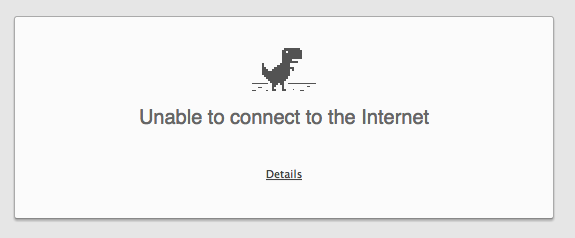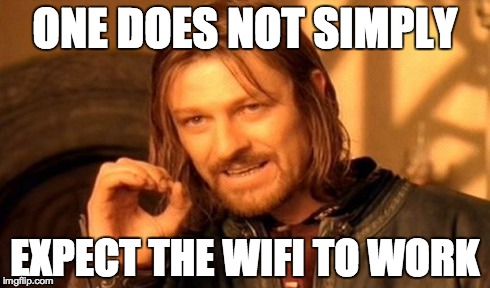The Myth of the 4-Hour Workweek

This year I re-read the The 4-Hour Workweek. For the 8th time.
“Freedom is like a new sport.”
-Tim Ferris in the 4-hour Workweek
Back in mid-2007 a co-worker told me to read Tim Ferriss‘ book.
“You will love it” she said.
A week later I requested all remaining vacation hours and took a 3-week surf trip to Costa Rica.
I returned home sunburnt and happy, and the next day I promptly quit my job, started work as a professional blogger, and left on an indefinite sojourn to S. America that started with an expedition over the Chilean Andes.
Such is the power of the book to inspire action.

Over 7 years later I find myself waking up in Budapest, Hungary, pursuing wilder goals than I could have imagined at the time.
If you’ve read the 4-hour Workweek (4HWW) you might expect me to say all this was easy–all I had to do was start a website, hire a virtual assistant, and get on a plane to Europe–where I would occasionally check to make sure money kept flowing into my bank account.
For those of you who haven’t read Tim’s palm-tree studded Bible of lifestyle-design, or for those who didn’t really get it, here’s the punchline: it’s not really about working 4 hours a week.
The Myth of the 4-Hour Workweek
Sam wakes up to sunshine and birds chirping and, espresso in hand, sits down at his computer. He plans to spend no more than 1 hour checking on his ‘muse’ business, then get on to his lifestyle projects (which include a calligraphy workshop and a class on cooking with Italian Wine).
Sam flips open his Macbook and waits for the wifi to connect. For some reason he can’t connect, but it only takes 10 minutes of cycling the wifi on and off on is his laptop to realize that his homestay’s internet no longer works.
No problem, Sam strolls to the conveniently-located neighborhood coffee shop with a loss of only a few minutes.
Sam grabs a spot at the cafe and some dark roast, but before logging into anything he connects to a VPN (internet security) service, because he knows that using an unsecured wifi hotspot without one is risky (true story). He opens his VPN client and clicks “connect”.
Fifteen minutes later Sam is still fiddling with the settings trying to get his VPN to connect, because he’ll be damned if he’s going to shoot his uncloaked passwords through cyberspace. He decides to close the VPN program and start over, but then his Macbook won’t let him access the wifi settings anymore. Strange, because Macs aren’t supposed to crash. He restarts his laptop and goes through the routine again.
Forty-five minutes after he sat down, Sam is finally connected and ready to use the internet. He decides to test his internet speed and navigates to SpeedTest.net where he finds that for some reason his VPN (which is the best on the market) is only getting 0.28 mbps download speeds, which is about as fast as one of the original dial-up modems he used in the 90s.
After 1 hour and 15 minutes of screwing around with the VPN-Wifi setup, Sam finally gets into Gmail Offline and sends the 2 most important emails (80/20 principle).
Sam then opens his Google Adwords (advertising) account to check the sales page test he set up the day before, to find that (despite the $50 budget limit he set) Google liquidated $287 of Sam’s money sending clicks to a web page that doesn’t exist. No big deal though, because Sam already decided not to worry about mistakes that cost less than $500.
Sam decides to make a new landing page for his ads so he logs into the most popular landing page design software (free for 30 days) and starts re-working the design.
6.5 hours later, Sam has figured out how to change the font spacing on the headline, and although he can’t get the images to look right he has a minimum viable landing page (MVP). Not pretty, but it will work. Sam changes the URL in Adwords, sets a new budget, and re-starts the test.
Sam smiles, closes his laptop and calls it a day. Mission accomplished. On to Calligraphy class.
You’re Doing it Wrong
“A colossal swindle of the “New Age” movement is the notion that gaining a state of effortless being and doing requires no effort. In fact, great conscious effort, discipline, and patience are normally required to enter the “flow zone” where previously frightening challenges start taking on an aspect of relaxed ease. The venue does not change. Everest does not get smaller and the North Pole does not get warmer. It is we who must transform, and that takes work. If the process was easy, we’d all be world champions.”
-John Long, in the forward to The Rock Warrior’s Way
I laugh every time I read the section in the 4HWW on ‘Jim and Sally’ who quickly set up fully automated muse businesses that immediately start converting internet traffic into $$$ in their bank accounts.
If it were only that easy. Here are some of the top myths/misconceptions and realities of the 4HWW doctrine (both what is in the book and what people assume), as I see them:
Myth #1: Building an income stream is easy.

After 7 years of working online I can say that sure, building an online revenue stream can be easy, however, building a business system or even just revenue that is continuous, automated, and scalable, is another matter. You had better be a) committed to what you’re doing and b) willing to sit (or stand) in front of the computer for days on end.
Obviously, the Jim and Sally stories are simplified for instruction, but in real life Murphy’s Law applies to everything I’ve ever done (especially on the internet). If you think the wifi is going to work when you need it, or that you aren’t going to be fooled by the statistical intricacies of sampling error, or that your primary contractor won’t quit right in the middle of a project, or your top client won’t fire you, all right before you leave on a ‘mini-retirement’, think again.

In fact, I’ve even found a correlation between saying the words “vacation,” or “week off,” or “friday,” and my web hosting going down.
I think the most obnoxious part of the book–and what really galls people-is making it all sound so easy. There is a single paragraph devoted to figuring out your business by “throwing it all at the wall to see what sticks”, which should “take no more than 2 months”. If you have years of domain experience working online, you may be able to do it this fast if you know exactly what you’re doing.
But remember, if it wasn’t difficult it wouldn’t be that much fun, either.
Myth #2: It’s about working 4 hours a week.
Definition: The 4-hour Workweek letdown: a feeling of unhappiness and discomfort, especially following the realization that getting what you want in life will require hard work.
The 4-hour Workweek’s title came from AB-(click-through) testing on Adwords, and it’s just marketing.
The deflating part is realizing that, despite an initial feeling of elation that success is already in-hand, the book isn’t about working less, and it’s not about happiness and ease as destinations (they aren’t).
Tim Ferriss recently said on his podcast–to clear up the issue once and for all–that the book isn’t about working 4-hours per week but about maximizing output per hour worked. Combined with clear goal-setting, this is a recipe for figuring out what you want in life and working (your ass off) towards that–instead of the default “worst trade ever” of trading all your time for money so that you can someday do something else.
What the 4-hour Workweek is actually about
In my mind, Tim’s book has 3 distinct focal-points:
- How to define exactly what you actually want (goal-setting)
- How to maximize output per hour worked (productivity hacks)
- Inspiration and validation of an alternate reality (vs the standard life path)
Productivity
In many ways, this is the whole point: stop screwing around and start focusing your time on something that matters (see goal-setting below).
Those who have read the book know the two most important productivity tips in the book are:
- Pareto’s Law (aka the 80/20 principle), which says that 80% of results come from 20% of the effort. This means if you can figure out which 20% is producing the results, and then only focus on those actions, you’re overall effectveness will go through the stratosphere. The law also highlights the difference between being effective by doing things that matter and efficient by doing anything (that may or may not matter) well.
- Parkinson’s Law, which says that work expands to fill the time available, so one should never work without explicit time boundaries.
Combine these two rules by focusing on the 20% that matters with extremely short and specific deadlines, and you can beat the productive output of the average office workday in about 2 hours.
This necessarily attacks the industrial-ear assembly-line association between time and productive output, as well as the false notion that more is more. Just because I complete 8 hours of work in 4 hours does not mean I should still work 8 hours. 80% of the productive work I get done happens in the first 4 hours. The last 4, according to these laws, are time better spent elsewhere.
Defining Success in Life: Goal-Setting
Defining success is the most important part. Without a roadmap how are you supposed to know where you’re going? Surprisingly, very few people actually write down what they want in life.
For more on the process check out this post on dreamlining.
And in terms of things being easy, in my daily experience it’s a full-on battle to get things done and continue marching down the road toward my goals.
Which leads to one simple conclusion: you had better want–more than anything else in the world–what you’re working for (hence starting with a definition of the endpoint).
Otherwise, when you’re lying on the floor with food-poisoning, listening to the sound of jackhammers from the building construction that follows you around the world, and staring at a “cannot connect” screen on your laptop, you may experience a slight existential crisis.
The laziest thing you can do in life is follow the beaten path, work for money, and accept what you get.
“We are kept from our goal, not by obstacles but by a clear path to a lesser goal.”
-Robert Brault quoted in The One Thing.
Inspiration and validation of an alternate reality
Whatever your feelings about the 4HWW, one thing is certain: it’s the Bible of lifestyle-design and it inspired a mass-migration out of the office and into the great unknown.
Underneath the elitist hype of lifestyle-design is a solid set of principles and how-to, and most importantly the validation of choosing alternatives to the status quo (like the idea of retirement). This book set the precedent for thousands to follow, and every time it gets me almost manically excited about what’s possible.
The book is also a redefinition of wealth for those who still believe money and material goods are the ultimate measures of success and a wakeup call that life is too short to wait to the end to enjoy it.
It’s a recipe for defining what you want, eliminating everything else, and figuring out how to make just enough money to fund that.
Myth #3: You can’t work only 4 hours a week.
Actually you can, assuming you have the systems in place to support this (and that you want to).
Most people still can’t separate the conveyer-belt “I see you = you are working” concept of time = money, but it’s actually output = money. If I have a team of 3 working for me in Indonesia for $4 / hour (true story), and I use 2 of my four hours to project manage them, 1 hour to answer emails, and 1 hour to fiddle with things, I just completed a 124 hours of total work for the week, despite only sitting in front of my computer for 4 hours. Or to put it another way, every hour I work is worth 30 hours.
Over course, you also just spent $480 on payroll that week, so you’d better have a cash-flow positive situation before you scale like this (and some really good systems).
The irony here is that assuming you’re building a business you enjoy it is actually more difficult to restrict your working hours when you work for yourself. Often, you just don’t want to stop.
And if you’re working on something you actually care about the lines between work/goals/lifestyle become blurry.
Myth #4: You can hire someone else to do you job (growing the business).
It’s easy to assume that you can outsource business building.
Nope, you can only manage someone else to do extremely well-defined jobs. Or, you can give up a bunch of ownership in the company and bring on a partner.
I hired my first Virtual Assistant right after reading the 4HWW in 2007, and it has been a great teaching tool. Nearly all the mistakes have been my fault: overcomplicating things, poor communication, vague expectations.
Your job as the architect is to build the framework, test the paths, define which ones to work on, and hand them off so you can do something else.
But yeah, it’s about as easy as anything else. Not.
Myth #5: It’s about working as little as possible.
No, it’s about getting the right things done to move toward the specific outcomes you want.
If you want to work 100 hours a week, great. The key is minimizing working for the sake of not having anything better to do, working to make money with no clear purpose, or working on anything that doesn’t move you closer to your goals.
Most highly motivated people want something cool to work on, so the point here is not working as little as possible but owning up to what you really want to do (external pressure be damned) and going after it.
Myth #6: You can only do 20% and that’s enough (80/20 rule)
Misconstruing this rule may be the biggest mind$^#@ of the book.
“I’ll just do the 20% of work that get 80% of results and that’s enough”. Yeah right.
Turns out that profit is often in the last 20% of results that take an additional 80% of work.
For a long-time I thought Tim was actually saying “only do 20%” and let the rest go (art of letting bad things happen), but now I don’t think that’s it. What I think he’s saying is: what 20% of focus gets me 80% of the results right now. Once that work is done, you don’t call it good, you sit down and ask “ok so now what 20% of work will produce the next 80% of results?” And you ignore any of the other BS that could get in the way of doing that 20%.
A better way to frame how to get things done effectively came from reading (my new favorite book, post on this coming soon) The One Thing, which instead of working in percentages asks “What is the One Thing I can do right now that makes everything else easier or irrelevant?”
Myth #7: You have to leave home/travel to be a ‘lifestyle designer’.
Lifestyle-design is about defining your ideal life, not about traveling. You can do whatever you want.
It just so happen though that the tools of geo-arbitrage are extremely useful, and traveling to another country can extricate you from the potentially destructive social norms of buying things you don’t need and keeping up with the Jones’.
It’s a lot easier to find and experiment with a new path in a totally foreign environment, but it’s by no means required.
Myth #8: You should be killing it/having the time of your life it or you aren’t doing it right.
This was the hardest conception for me to get over.
Reading the pages of the 4HWW makes it sound like if you don’t have 20 MBAs in Mumbai working around the clock for you (figuring out exactly which fencing class you should take in Italy), while another 10 sales of your $500 ‘product’ roll in, you just aren’t good enough.
It’s easy to feel discouraged if you aren’t ballin’ but know this: most people actually aren’t, and there will be some dark periods you have to slog through to get anywhere near this kind of lifestyle. Remember that Tim mentioned working 80-hour weeks for years before he could check out.
Don’t escape one set of flawed norms just to replace them with another: if you know what you want and you’re getting it, who cares? The book says very specifically that making money for no intended purpose is a waste of time, so don’t try to make $80,000 a month if you don’t need it.
The most important thing I have to remind myself is that I can live almost anywhere for $40-$50 a day ($1200-$1500/Mo.), and that I’m accomplishing all the goals I set out to attempt. It just doesn’t take nearly as much money as you’d expect.
4HWW Reading Notes: What jumped out at me (again) after this last reading
Thanks for reading this 3500 word brain dump on the 4HWW. This post was both requested and something I’ve been meaning to get out of my head for years.
Here are some additional notes straight from the book:
- Default: to buy all the things you want to have. NewRich: to do all the things you want to do, and to be all the things you want to be. If this includes some tools and gadgets, so be it, but they are either means to an end or bonuses, not the focus.
- Don’t be the boss or the employee. Be the owner. Own the trains and have someone else ensure they run on time.
- Think big but make sure payday comes every day. Cash flow first, big payday second.
- Different is not always better. But it is when it’s more effective or more fun. If the recipe sucks it doesn’t matter how good a cook you are.
- By working only when you are most productive, life is both more productive and more enjoyable.
- 1 month overseas relocation for every two months of work projects.
- Laziness = letting life pass you by without first determine success for yourself
- Visualizing failure is the key to making things easy. It’s uncertainty that actually scares us.
- “The luxury I advocate is the reward for those who have no fear of discomfort.”
- The fishing is best where the fewest go. Less competition for big goals.
- What do I want or what are my goals are too vague. Instead: what would excite me? What would I move heaven and earth to do?
- Dreamlining is different than goal setting: 1. Goals shift from ambiguous wants to defined steps, 2. The goals have to be unrealistic to be effective. 3. focused on activities that will fill the vacuum created when work is removed. Living like a millionaire requires doing interesting things and not just owning enviable things. Best to set 3 and 6 month Dreamlines. No far off goals because variables change too much. Complete dreamline actions before 11am.
- Eliminate your inefficiencies and find your strengths so you can multiply then.
- Don’t make money for no purpose. Don’t work for money you don’t need.
- More customers is not the goal. Max income min effort
- Parkinson’s Law WORKS: It’s easy to screw around a lot on things that don’t matter when you have an unrestricted time. Restrict work hours dramatically. So much that it hurts. It should actually be painful and feel like you can’t finish it all. That’s when the magic happens and you hyper focus on the important stuff.
- 20/80 your customers: figuring out which 20% of customers produce 80% of your revenue, profiling them, and attempting to replicate.
- Lifestyle design depends on massive output.
Additional Resources:
- 22 Things I’ve Learned as a Digital Nomad
- The 6 phases of lifestyle design
- Obviously, if you haven’t read The 4-Hour Workweek you should start there.
- The 4HWW Blog has a lot of great content. Some favorites:
- Tim Ferris’ new podcast is excellent, highly recommended.
- You Read the 4 Hour Work Week. You Failed. Here’s What You Can Do About It. (TropicalMba.com)
- TMBA 094 (LBP84) – How To Live The “Four Hour Workweek” Dream And Make Money From Anywhere in the World




